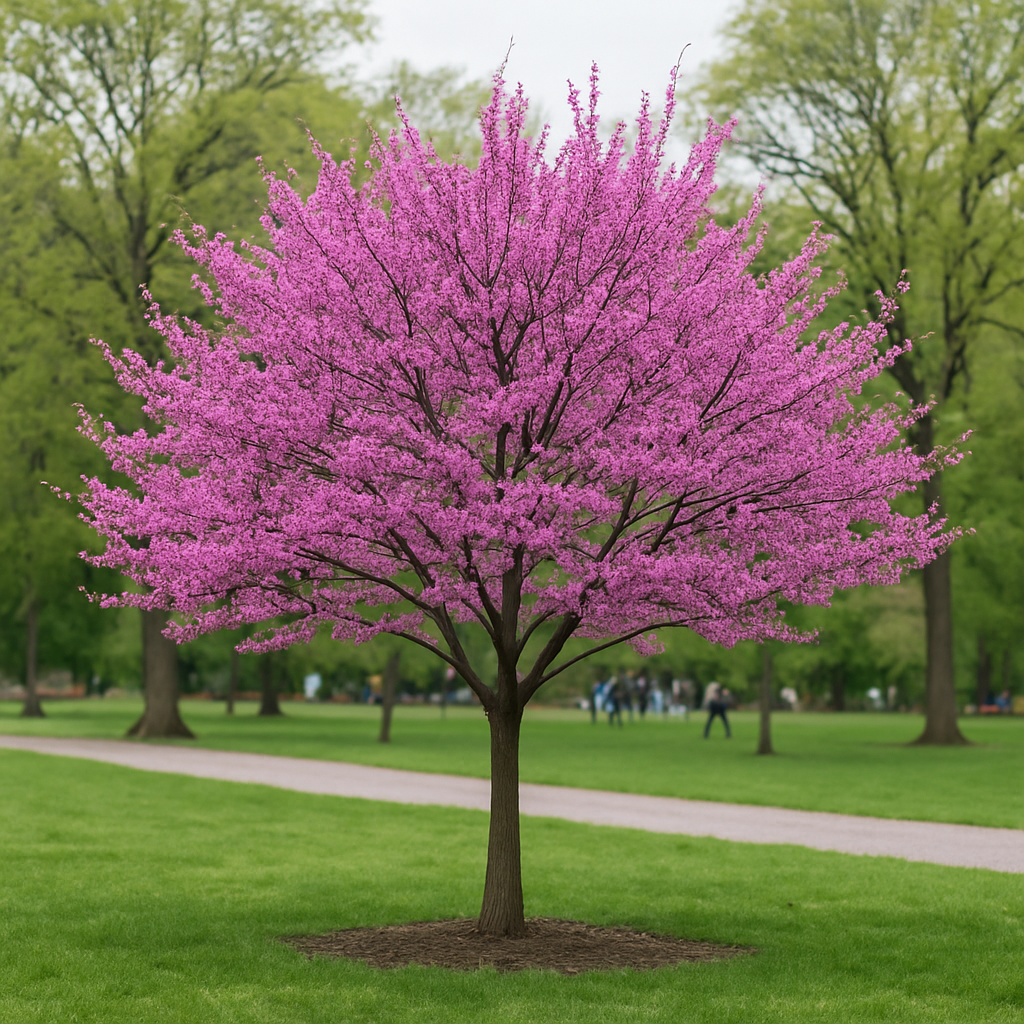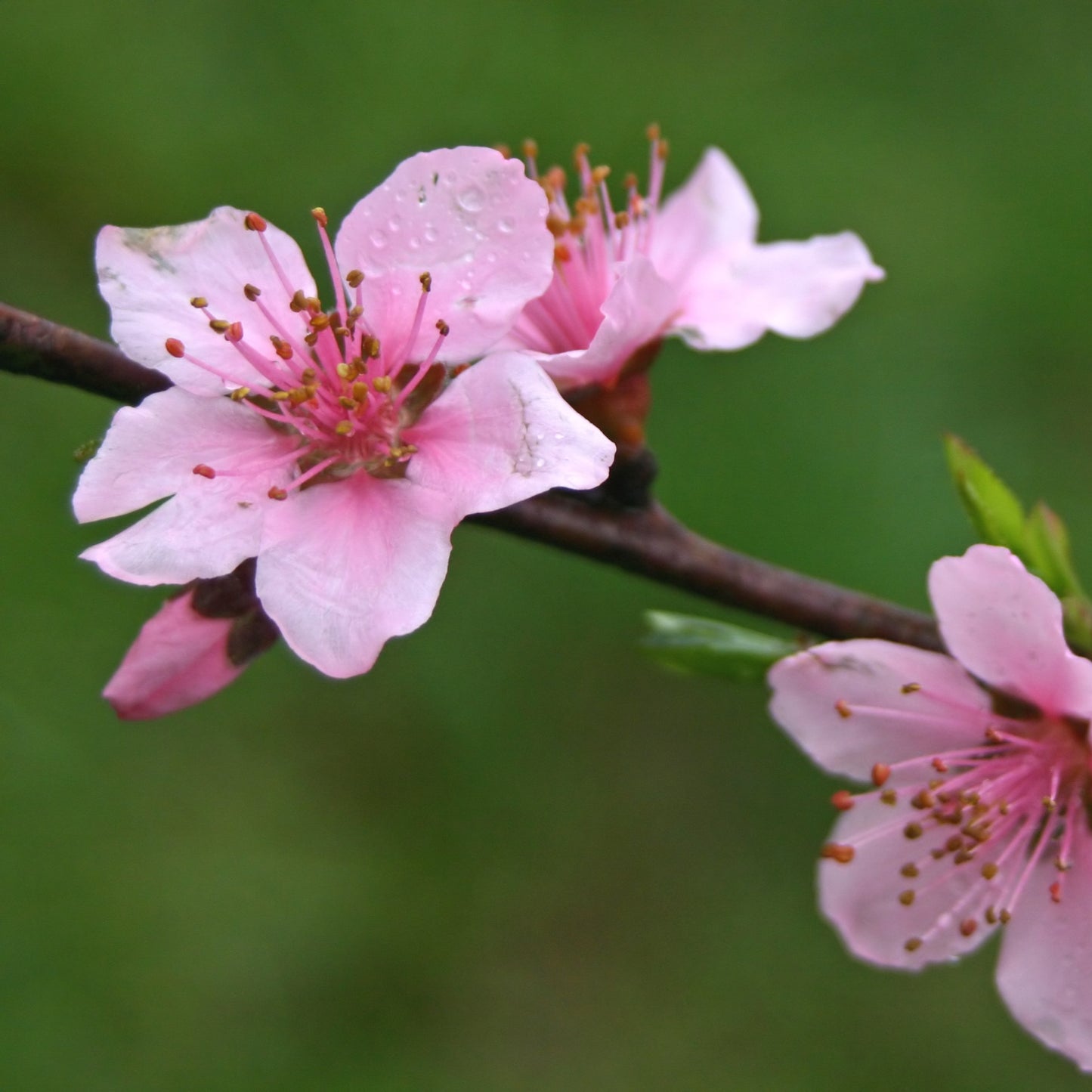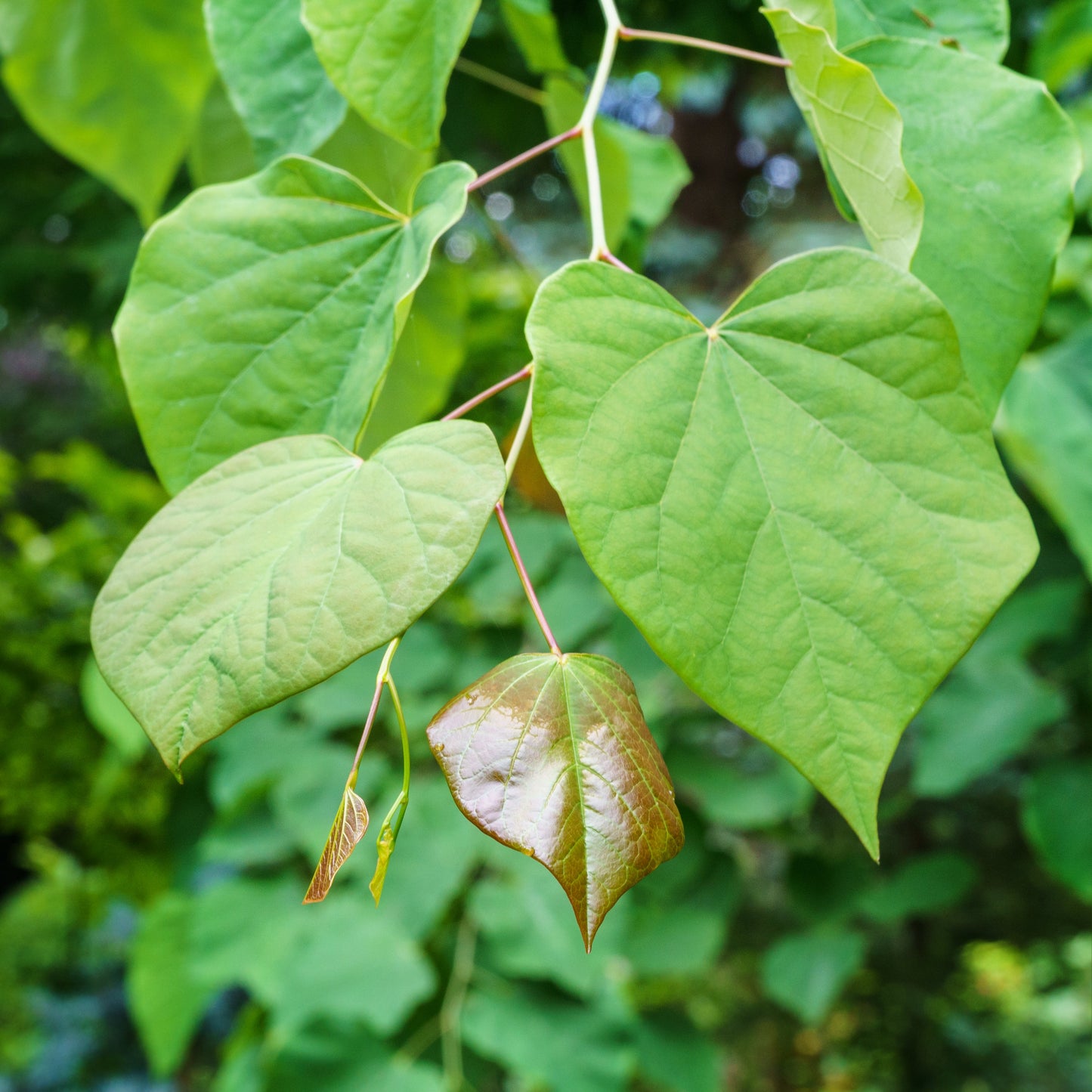Limited Quantities - Reserve Now For Fall
Eastern Redbud
Eastern Redbud
Couldn't load pickup availability
Cercis canadensis
Eastern Redbud Tree
The Eastern Redbud Tree is a native spring-flowering favorite celebrated for its rosy-pink blossoms, heart-shaped foliage, and graceful branching. One of the first trees to bloom in early spring, it brings a burst of color to woodlands, gardens, and landscapes long before most other plants awaken.
Compact, adaptable, and ecologically valuable, this tree is ideal for front yards, woodland edges, pollinator gardens, and understory plantings, offering seasonal interest and habitat benefits with minimal maintenance.
Eastern Redbud Tree Overview
| Attribute | Details |
|---|---|
| 🌿 Botanical Name | Cercis canadensis |
| 🏷️ Common Names | Eastern Redbud, Judas Tree |
| 🌳 Mature Height | 15–30 feet |
| 🌐 Mature Width | 20–30 feet |
| 📈 Growth Rate | Moderate (1–2 feet per year) |
| ⏳ Lifespan | 20–40 years |
| 🧊 USDA Zones | 4–9 |
| ☀️ Sun Preference | Full sun to partial shade (blooms best in full sun) |
| 🧱 Soil Type | Moist, well-drained loam, clay, or sandy soils |
| ⚖️ Soil pH | Slightly acidic to neutral (6.0–7.5) |
| 💧 Water Needs | Moderate; tolerates short periods of drought |
| 🌸 Flower Color | Rosy-pink; blooms on bare branches in early spring |
| 🍃 Foliage Color | Heart-shaped green leaves turn yellow in fall |
| 🐝 Pollination | Attracts bees, butterflies, and hummingbirds |
| 🌿 Growth Habit | Rounded, spreading canopy with low branching |
| ↔️ Spacing | 20–30 ft for specimens or shade groupings |
| 🏡 Landscape Uses | Accent tree, woodland borders, pollinator gardens, patios |
| 🧹 Maintenance Level | Low |
Environmental Benefits
🌸 Provides early nectar for pollinators and native bees
🌿 Grows well in urban, suburban, and native woodland environments
🪶 Supports small birds and beneficial insects with light cover and bloom cycles
🌱 Aids in native plant restoration and biodiversity
Pros & Cons
| ✅ Pros | ⚠️ Cons |
|---|---|
| 🌸 Stunning early blooms before leaves emerge | ❄️ May suffer branch damage in heavy ice or wind |
| 🐝 Supports pollinators and native insects | 🌳 Shorter lifespan compared to larger shade trees |
| 🌞 Thrives in sun or light shade | ✂️ Occasional pruning needed to maintain structure |
| 🧬 Native species with high ecological value | 💧 Sensitive to prolonged drought in hot zones |
| 🏡 Compact size ideal for smaller yards and landscapes | 🐛 Can be susceptible to canker and borers if stressed |
Planting & Care Guide
🛁 Water deeply at planting and maintain consistent moisture for the first season
🕳️ Dig a hole twice as wide as the root mass; plant at natural soil depth
🌾 Apply 2–3 inches of mulch around base, keeping away from trunk
💦 Water weekly in hot weather, especially during the first few years
✂️ Prune after flowering or in late winter to shape and remove crossing limbs
🧪 Fertilize lightly in early spring with compost or tree-specific formula
The Eastern Redbud Tree brings bold spring color, pollinator support, and graceful form to any space. Whether used as a specimen tree, woodland accent, or native garden highlight, it provides early-season charm and long-lasting landscape value that shines in all four seasons.
Share






